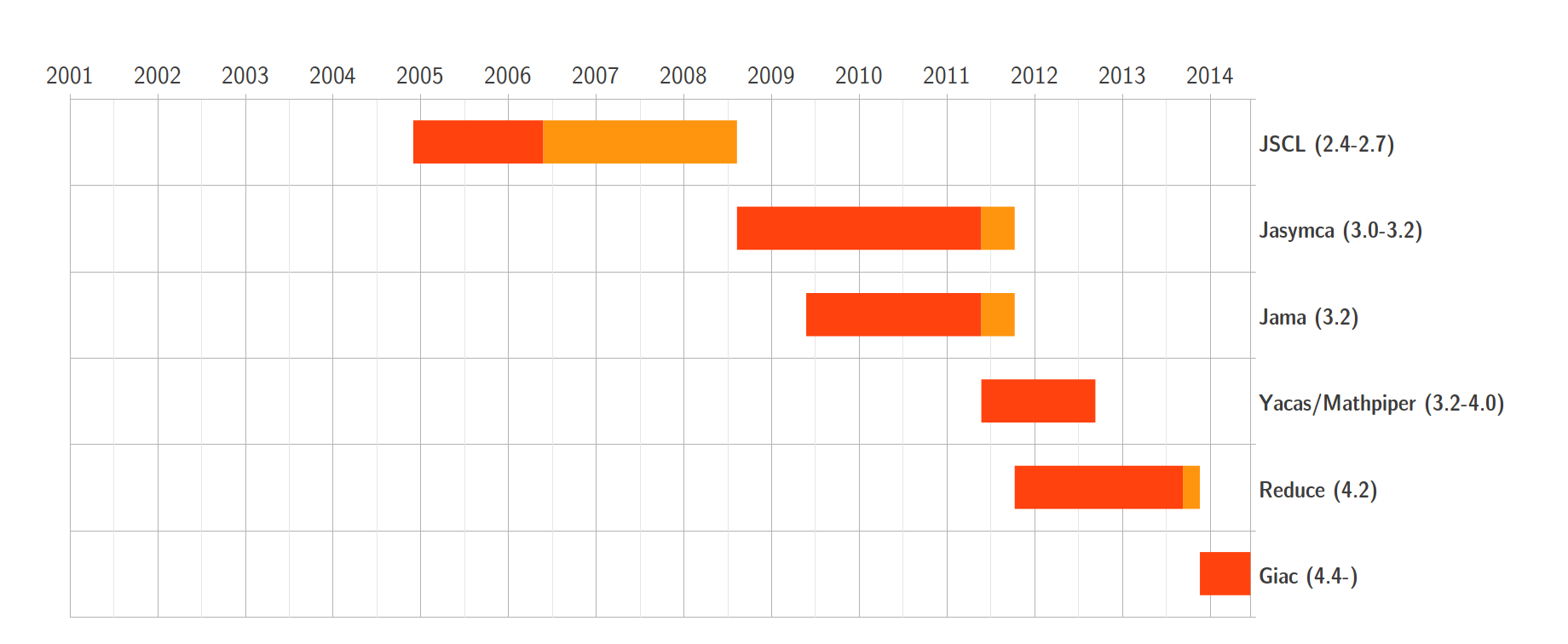Overview
GeoGebra is an open source mathematics education software being used by millions of users worldwide. It is mainly used to visualize mathematical relations in a dynamic way by supporting reading correlations off not only visually but also numerically.
This approach has been continuously extended since 2004 by using an embedded computer algebra system (CAS) in GeoGebra in version 2.4. In those days CAS JSCL was used which has been changed to Jasymca (2008, GeoGebra 3.0), Jama (2009, GeoGebra 3.2), Yacas/Mathpiper (2011, GeoGebra 3.2-4.0), Reduce (2011, GeoGebra 4.2) and Giac (2013, GeoGebra 4.4).

Interest in using CAS support in GeoGebra started a more specialized interest in computing the algebraic equation of more general geometric objects than lines and circles, namely locus equations. A team of mathematicians (including the first author) located in Spain offered scientific partnership and collaboration for the GeoGebra team (including the second author) located in Austria, and their joint work was funded by the Google Summer of Code program in 2010 by supporting a Spanish university student Sergio Arbeo to implement the computation of algebraic locus equations for GeoGebra 4.0. Arbeo programmed the computations by using an extra CAS JAS in GeoGebra, but his code was later modified by the second author to use Reduce (and even later Giac) instead.
As a result, locus equation computations are already present in GeoGebra since version 4.2 and because of the numerous user feedback the newer versions (including GeoGebra 5) include some additional enhancements and bug fixes as well. Also many users found the introduced LocusEquation command useful and easy to use in education as well. In Section 2 we consider some possible classroom uses for the LocusEquation command.
However Arbeo covered a wide set of classroom problems, meanwhile new mathematical methods appeared to handle some problematic situations. The joint work of Montes, Recio, Abanades, Botana and the Singular CAS team yielded to have a powerful method to compute locus equations by using the Gröbner cover (grobcov) package in Singular. In this way GeoGebra has been extended to outsource computations to SingularWS, an external web service computing locus equations for GeoGebra (among other computations). This method has been found to be extensible to compute not only locus equations but envelopes as well. In Section 3 we show some of these envelopes, pointing out the possibility of introducing them also in secondary schools.